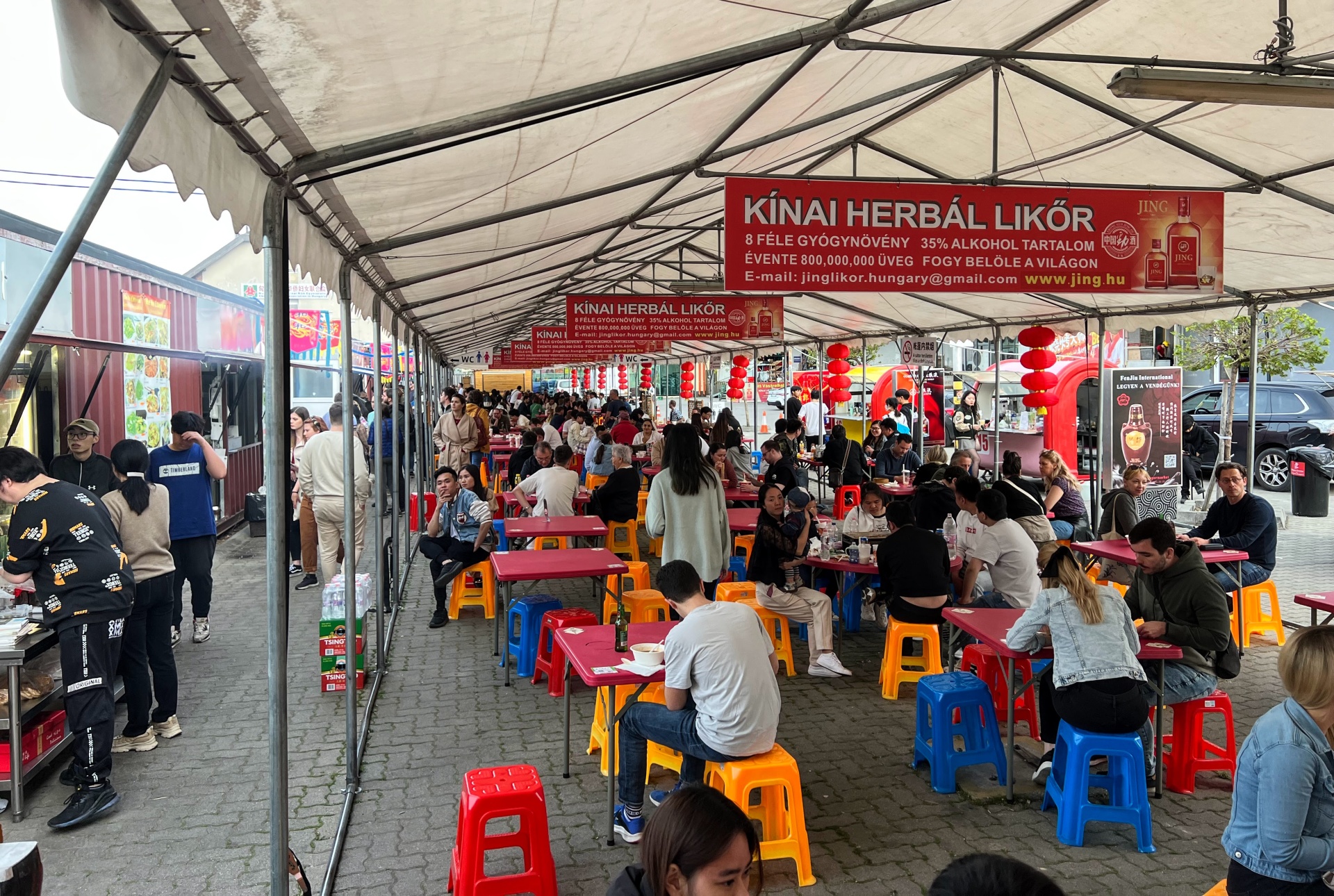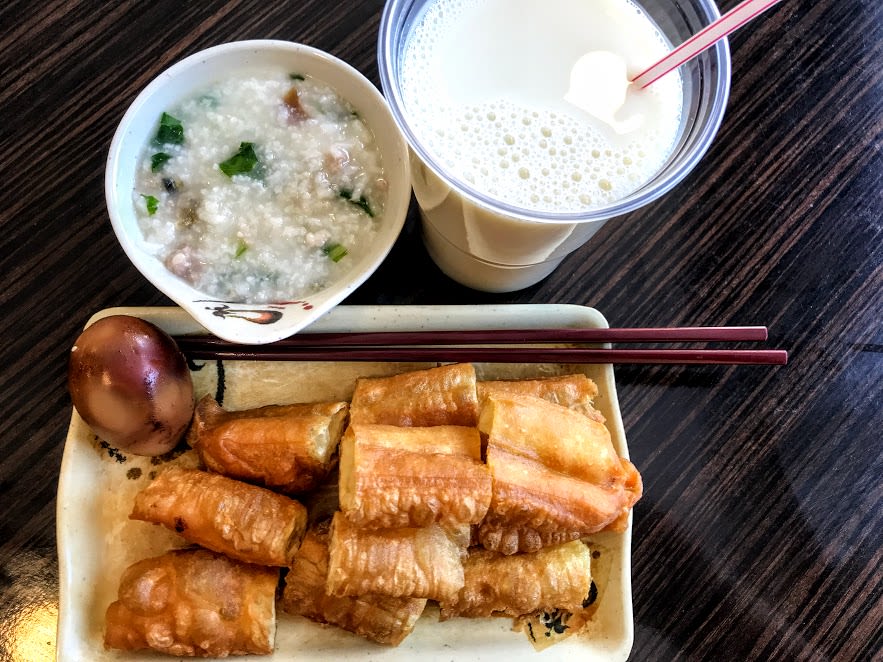Hiding on the outskirts of the city, Budapest's Chinatown has more than a dozen outstanding Chinese restaurants.

The Chinese Community in Budapest
With more than 30,000 people, Budapest is home to the biggest Chinese community in Central Europe. Chinese people came to Hungary between 1989 and 1992, when there were no visa requirements and economic opportunities were widespread after the fall of communism. Most Chinese immigrants were unskilled, hard-working people hailing from villages and small towns in Eastern China — mainly Zhejiang and Fujian provinces — looking for a better life in Europe.
Initially, Chinese people set up markets on the outskirts of Budapest, selling low-priced imported Chinese goods, mostly clothing. Over time, some of them have done very well, but the majority are still toiling away as clothing vendors from dawn to dusk. At its peak, in the 1990s, the Hungarian Chinese community amounted to almost 50,000 people, but many have since moved on to Western Europe or returned to their hometowns in China which had been drastically transformed in the meantime.

Recently, a new wave of Chinese immigration took place in Budapest: between 2013 and 2017, thousands of Chinese citizens purchased Hungarian residency bonds through an immigration-by-investment program run by the Hungarian government. Unlike the first wave of immigrants, these newcomers were more cosmopolitan and well-off (the cost of a residency bond ranged €250,000 to €300,000). Many of them purchased homes in the Buda hills and other prestigious pockets of the city, instead of settling in the working class neighborhoods of District 10 where first-wave Chinese people live. The recently opened Chinese restaurants in Budapest, particularly the pricier ones, cater to these well-heeled newcomers.
Monori Center, the Chinatown of Budapest
Budapest's Chinatown, also known as Monori Center, is situated in Kőbánya, a bit outside the city center. Here, hundreds of clothing wholesalers spread across an area of 80,000 sqm (almost 900,000 sq. ft.), but there are also places geared to the local Chinese: grocery stores; traditional Chinese medical centers; churches; massage and hair salons; pastry shops; and two Chinese-language newspaper publishers. And plenty of restaurants.
In fact, Monori Center is where Budapest's top Chinese restaurants cluster. Be it upscale Sichuan-food, a modest dumpling shop, seafood, or a neighborhood restaurant, you'll find them all here. Since the vast majority of customers consist of Chinese people, the dishes are comparable to those found in China — there's even a local Chinese farmer outside Budapest who grows Chinese vegetables in a greenhouse.
Bear in mind, though, that Monori Center isn't your typical Chinatown. Instead of the usual signifiers of Western Chinatowns — pagoda-shaped buildings and lively street food vendors — Monori Center is a quiet commercial town; if it weren't for the Chinese signs above the storefronts, you could mistaken it for a sleepy outlet mall. But nonetheless, the depth of food options can make it a worthwhile destination.

There's another area near Monori Center where many Chinese businesses operate: Józsefvárosi Piac/Euro Square. Here, a seemingly endless row of neglected industrial buildings are teeming with Chinese and Vietnamese vendors. This chaotic and bustling space feels more like a typical Chinatown complete with hole-in-the-wall eateries buried deep inside (including an excellent Chinese pancake shop), although here too most vendors are wholesalers.
I recommend visiting Budapest’s Chinatowns. Apart from tasty Chinese food, they'll make you appreciate Budapest’s cultural and ethnic diversity that even most locals are unaware of. Don't expect many people to speak English or Hungarian, but if you follow your nose, good things will come your way. In general, Monori Center is easier to get around and most of the sit-down restaurants are also there.
How can I get to Chinatown from the city center?
To get to Monori Center from downtown by public transport, you can either take a bus from Kálvin tér (#9 to Kőbánya alsó vasútállomás) or a tram from Blaha Lujza tér (#28 to Mázsa utca). You'll journey through working class neighborhoods that offer a glimpse into the less glamorous side of Budapest, one that few tourists normally see. Alternatively, you can take a 15-minute taxi ride that will cost €12-15.
Józsefvárosi Piac/Euro Square is a bit closer to the city center and along the same tram (#28) and bus (#9) lines as Monori Center.
Where To Eat, What To Eat?
Budapest's downtown has plenty of Chinese takeouts that serve toned-down foods adjusted to local taste preferences, but in Chinatown (Monori Center) you'll find true-to-China restaurants.

China has a refined, complex, and diverse cuisine, with major regional differences. The leading Chinese restaurants in Budapest don’t usually specialize in a particular region, instead serving pan-Chinese fare with a selection of signature dishes from the main provinces like lazi ji chicken (Sichuan), lamian noodle soup (Lanzhou), and steamed dumplings (northeast). Nonetheless, the international popularity of Sichuan food has rippled out to Budapest too, meaning that chili peppers and Sichuan peppercorns feature prominently on most menus. Yu Man Tang, Spicy Fish, and Hehe are among the top Sichuan restaurants in Chinatown.
Although a landlocked country like Hungary isn’t exactly a seafood chef’s dream, Budapest has a standout Chinese restaurants specializing in steamed lobsters, crabs, and other treasures of the ocean: Milky Way. It's owned by a family from Wenzhou, the coastal Chinese city in Zheijiang Province. The only downside is the steep price points, which put these oceanic flavors out of reach for most people, both Chinese and Hungarian.
Hot potting is a huge trend in China and it’s becoming popular in Budapest, too. Like fondue, it’s a communal activity, where a group of people sit around an oversized table and cook together. Here, they dunk a variety of raw ingredients into the boiling broth, just to fish’em out a few minutes later cooked to perfection. Budapest boasts three hot pot joints: a northern Chinese with milder flavors (Wang Fu), a spicy Chongqing-style (Daohuaxiang), and one in between (San Guo Zhi).

If you're curious what Chinese breakfast is like, Hong Kong Büfé and HeHe serve classical Chinese morning foods, including different types of rice porridge (congee and xifan), pickled vegetables, deep-fried dough sticks (youtiao), steamed buns (baozi), scallion pancakes (cong you bing), and sweetened soy milk.